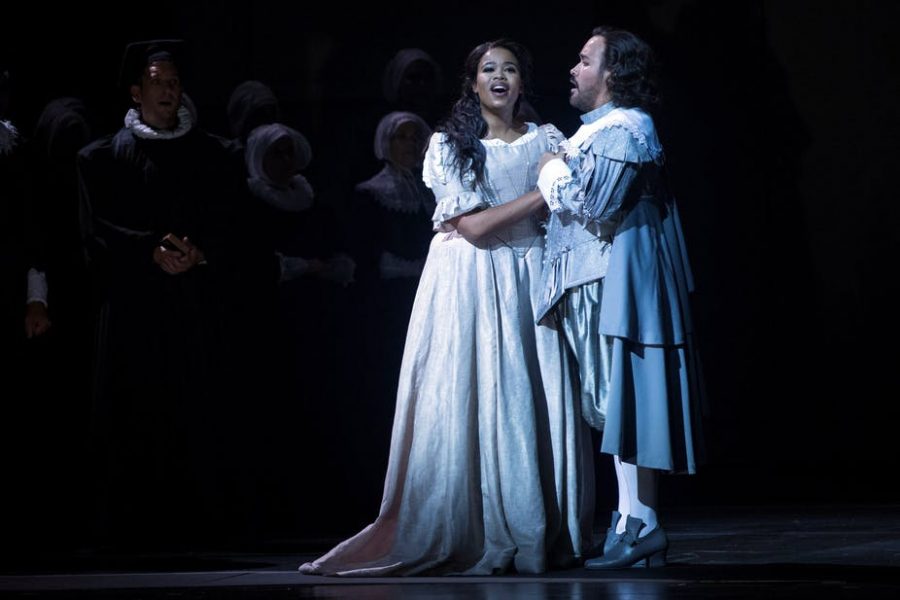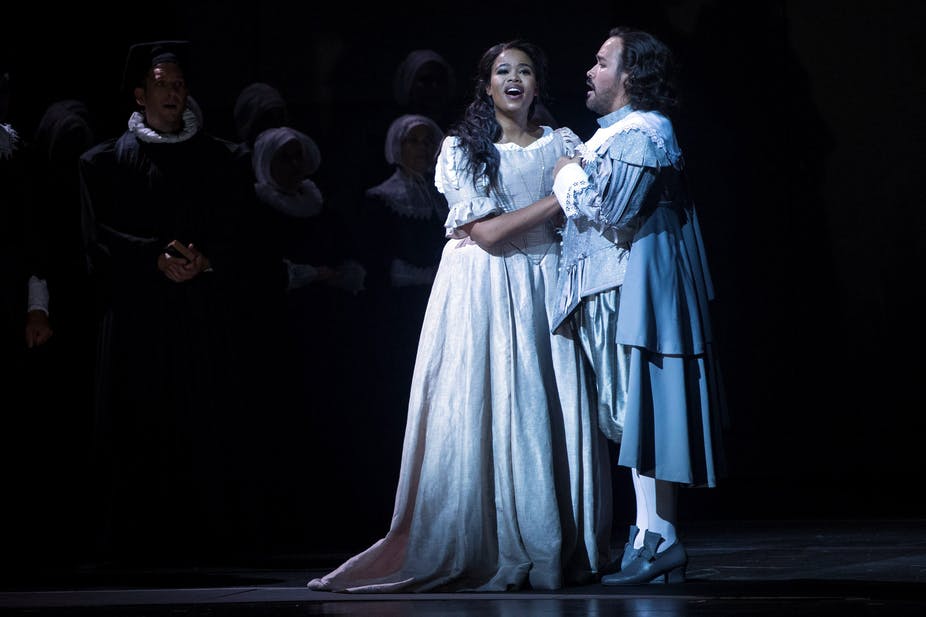
How South Africans Forged a Path to Making Opera Truly African
The transformation of the arts in South Africa has been on the cultural agenda since the dawn of democracy in 1994. Prior to that the apartheid government was deeply vested in advancing and funding the performance of Western European art forms. More inclusive performance arena and funding models have emerged in the past 30 years. […]

The transformation of the arts in South Africa has been on the cultural agenda since the dawn of democracy in 1994. Prior to that the apartheid government was deeply vested in advancing and funding the performance of Western European art forms.

More inclusive performance arena and funding models have emerged in the past 30 years. Arguably, opera has undergone the most significant changes. Once viewed as an elitist Eurocentric art form with little relevance in South Africa, opera has become an international export commodity eliciting pride among all South Africans. Opera used to be seen as a “white” art form. Today most opera singers are black.
The country has produced star singers with busy international careers, such as soprano Pretty Yende and tenor Levy Sekgapane. And there’s also been a proliferation of indigenous operas being composed.
Standard European repertory operas are still the most performed. But they are usually given a distinctly South Africa spin. A fine example is the international award-winning film version of Bizet’s Carmen. It’s set in Khayelitsha, a black township outside Cape Town, and titled U-Carmen eKhayelitsha.
For my doctoral thesis, which will form part of an upcoming book, I charted the evolution of opera between 1985 and 2015. My focus was on the reception of opera performances in Cape Town which I assessed by analysing newspaper reviews and articles on opera.
The study looked at how arts journalists and reviewers “negotiated” with their readers the changes in opera. Articles moved away from taking the European canon as the natural starting point, towards describing an operatic ideal that seemed to merge Western European operatic traditions and indigenous South African music.
The research also showed how canonic operas were adopted and how compositions of new indigenous South African operas emerged. Nonetheless, Western aesthetic values and standards have been kept in place.
I concluded that opera today in South Africa – in its staging and composition – seems to be a hybrid of European and local ideals of what the art form is. Over 30 years, a way has been charted towards creating a unique voice.
Relevant opera
For a long time, the standard repertoire was performed in English and Afrikaans translation while Italian, German and French operas continued to be staged in their original European settings. Adapting these operas so that they were relevant in a South African setting sparked the “Africanisation” of opera.
For example, the 1997 Cape Town interpretation of Puccini’s La Bohème was set in Soweto during the student uprising of 1976. Verdi’s Macbeth (2001) played off in the Democratic Republic of the Congo amid a guerrilla war. Lehár’s popular The Merry Widow was transported from Vienna to an imaged African state called Malagawi (2015).
Besides new settings and translations, operatic music has also been “Africanised”. The music of Purcell’s 17th-century Dido and Aeneas was interjected with Africa rhythms and instruments in a 2002 performance at the Spier Amphitheatre in Stellenbosch. And for a 2007 production of Mozart’s evergreen The Magic Flute, Western instruments made way for marimbas and African drums.
These are just a few examples of operas that have been made relevant for a contemporary South African audience.
Indigenous
The most significant change in the local operatic landscape has been the prolific composition of indigenous operas. Since 1995, 17 new local operas have been performed in Cape Town alone – the majority of them based on South African stories.
Relating the true events of the Bulhoek massacre in the Eastern Cape, the first of these new local operas was Enoch, Prophet of God (1995) by the late Roelof Temmingh (1946–2012). The Bulhoek massacre happened in 1921 when a lay priest, Enoch Mgijima, and his church followers, called the Israelites, were killed by police after they had supposedly illegally occupied a farm. Playwright Athol Fugard’s Valley Song, was transformed into an opera (2005) by Thomas Rajna. While these two examples were still written in the Western classical idiom, Hans Huyssen’s Masque (2005) was hailed by a Cape Times reviewer as going,
beyond the adaptation of Western music.
As with Enoch, Prophet of God, historical characters have been popular. Mzilikazi Khumalo wrote an opera about the life of Magogo, the Zulu princess, poet and prophetess.
The 19th-century Xhosa prophetess Nongqawuse was a character in two operas: Mats Larsson Gothe’s Poet and Prophetess (2008) and Neo Muyanga’s Heart of Redness (2015). The latter was based on Zakes Mda’s novel The Heart of Redness.
Realism and addressing pressing contemporary South African societal issues have clearly been the focus of local opera composition since 1995. It has been described by opera critics as a showcase of a musical and theatrical representation of local opera.
The study has shown that the “Africanisation” of opera through changing settings and musical scores have gone some way to establish what can be termed “South Africa opera”.
This hybrid of European and local ideas of opera is not an ideal performance practice or aesthetics. It has merely forged a way towards making opera truly South African – a path that’s still in need of further travel.![]()
Wayne Muller, Publications Editor / Research Fellow (Africa Open Institute for Music, Research and Innovation), Stellenbosch University
This article is republished from The Conversation under a Creative Commons license. Read the original article.
